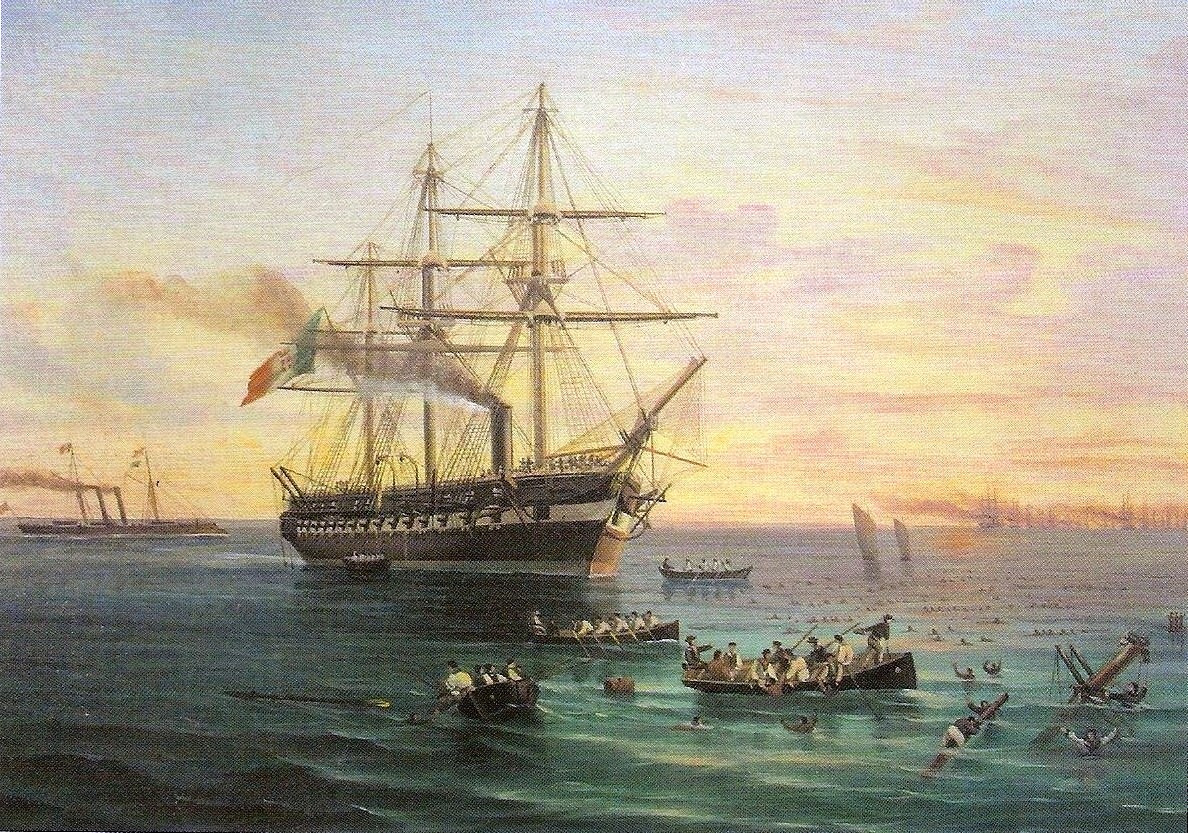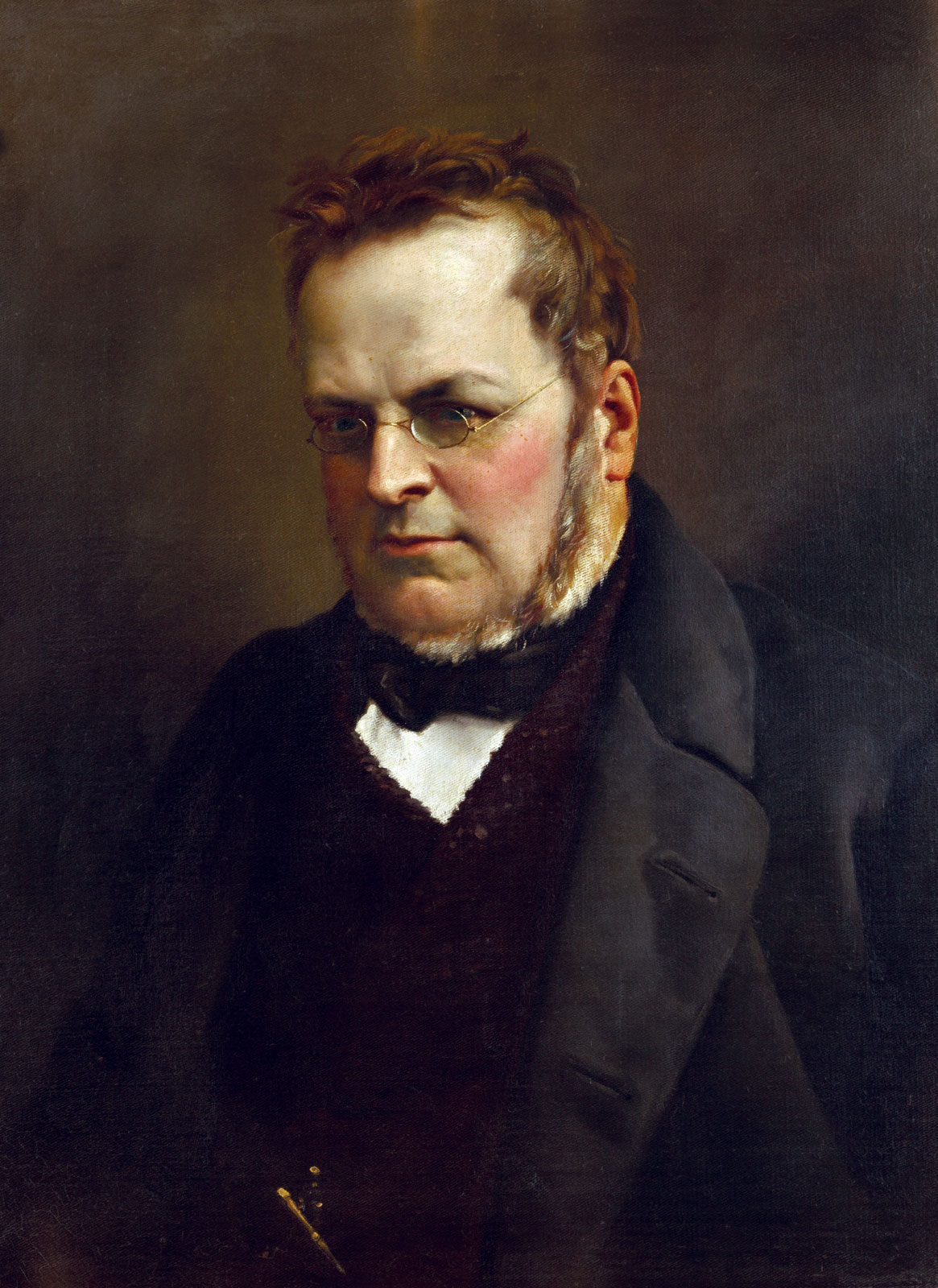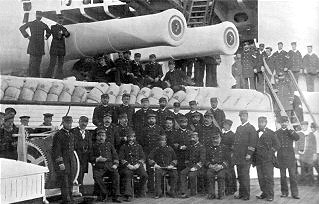|
Giovanni Bettolo
Giovanni Bettolo (Genoa, 25 May 1846 – Rome, 7 April 1916) was an Italian admiral, politician and deputy of the Kingdom of Italy who served three times as Minister of the Navy. He was President of the :it:Lega Navale Italiana 1912-1916, as well as president of the Corpo Nazionale Giovani Esploratori ed Esploratrici Italiani, Italian Scouts and Guides Association 1913-1915. Early life and career Giovanni Bettolo was born in Genoa to Antonio Bettolo and Angela Molinari, from a family with patriotic traditions, originally from Valsugana. He was the oldest of three brothers one of whom became an army general while the other ruined himself gambling. Giovanni entered the Regia Marina as an ensign in 1863 and was decorated for valour at the Battle of Lissa (1866), battle of Lissa for his conduct on the frigate '':it: Prince Umberto (pirofregata), Principe Umberto''. He became an admiral, working to rebuild the Italian fleet after the disastrous defeat at Lissa. Specialising in naval ... [...More Info...] [...Related Items...] OR: [Wikipedia] [Google] [Baidu] |
Minister Of The Navy (Italy)
The Italian Minister of the Navy ( it, Ministri della Marina del Regno) was a member in the Council Ministers until 1947, when the ministry merged into the Ministry of Defence {{unsourced, date=February 2021 A ministry of defence or defense (see spelling differences), also known as a department of defence or defense, is an often-used name for the part of a government responsible for matters of defence, found in states .... The last Minister of Navy was Giuseppe Micheli, who served in the government of Alcide De Gasperi.Presidential Decree n. 17 on February 4, 1947. List of Ministers Kingdom of Italy ; Parties * * * * ; Governments: Republic of Italy References {{Council of Ministers of Italy Navy 1861 establishments in Italy ... [...More Info...] [...Related Items...] OR: [Wikipedia] [Google] [Baidu] |
Benedetto Brin
Benedetto Brin (17 May 1833 in Turin, Piedmont24 May 1898 in Rome, Lazio) was an Italian naval administrator and politician. He played a major role in modernizing and expanding the Italian (Royal Navy) from the 1870s to the 1890s, designing several major classes of warships, including the large ironclad warships of the , , and es, the pre-dreadnought battleships of the and es, and the armored cruisers of the and es. His contributions to Italian naval power were marked by the naming of the second ''Regina Margherita''-class battleship as , among other commemorations. Biography Born in Turin, he worked with distinction as a naval engineer until the age of forty. In 1873, Admiral Simone Antonio Saint-Bon, Italy's Naval Minister, appointed him undersecretary of state. The two men collaborated on major projects: Saint-Bon conceived a type of ship, Brin made the plans and directed its construction. On the advent of the Left to power in 1876, Brin was appointed Naval Minister by A ... [...More Info...] [...Related Items...] OR: [Wikipedia] [Google] [Baidu] |
Ministry Of The Navy (Italy)
The Italian Minister of the Navy ( it, Ministri della Marina del Regno) was a member in the Council Ministers until 1947, when the ministry merged into the Ministry of Defence {{unsourced, date=February 2021 A ministry of defence or defense (see spelling differences), also known as a department of defence or defense, is an often-used name for the part of a government responsible for matters of defence, found in states .... The last Minister of Navy was Giuseppe Micheli, who served in the government of Alcide De Gasperi.Presidential Decree n. 17 on February 4, 1947. List of Ministers Kingdom of Italy ; Parties * * * * ; Governments: Republic of Italy References {{Council of Ministers of Italy Navy 1861 establishments in Italy ... [...More Info...] [...Related Items...] OR: [Wikipedia] [Google] [Baidu] |
Triple Alliance (1882)
The Triple Alliance was a military alliance between Germany, Austria-Hungary, and Italy. It was formed on 20 May 1882 and renewed periodically until it expired in 1915 during World War I. Germany and Austria-Hungary had been closely allied since 1879. Italy was looking for support against France shortly after it lost North African ambitions to the French. Each member promised mutual support in the event of an attack by any other great power. The treaty provided that Germany and Austria-Hungary were to assist Italy if it was attacked by France without provocation. In turn, Italy would assist Germany if attacked by France. In the event of a war between Austria-Hungary and Russia, Italy promised to remain neutral. The existence and membership of the treaty were well known, but its exact provisions were kept secret until 1919. When the treaty was renewed in February 1887, Italy gained an empty promise of German support of Italian colonial ambitions in North Africa in return f ... [...More Info...] [...Related Items...] OR: [Wikipedia] [Google] [Baidu] |
Vittorio Cuniberti
Vittorio Emilio Cuniberti (1854–1913) was an Italian military officer and naval engineer who envisioned the concept of the all big gun battleship, best exemplified by HMS ''Dreadnought''. Life and career Born in Turin, he joined the Genio Navale (the corps of the Regia Marina dedicated to shipbuilding) in 1878, and rose through the ranks until he became Major general in 1910. A collaborator of Italian admiral, naval engineer and politician Benedetto Brin, in 1899 he designed the ''Regina Elena''-class battleships. He died in Rome. Cuniberti's article Cuniberti is best known for an article he wrote for ''Jane's Fighting Ships'' in 1903, advocating a concept known as the "all-big-gun" fighting ship.Cuniberti, Vittorio, "An Ideal Battleship for the British Fleet", ''All The World’s Fighting Ships'', 1903, pp. 407-409. Up till then, the navies of the world built ships with a mixture of large and medium calibre guns. There was constant experimentation with calibres and layo ... [...More Info...] [...Related Items...] OR: [Wikipedia] [Google] [Baidu] |
Second Sonnino Government
The Sonnino II government of Italy held office from 11 December 1909 until 31 March 1910, a total of 110 days, or 3 months and 20 days. Government parties The government was composed by the following parties: The cabinet was externally supported by the Historical Left The Left group ( it, Sinistra), later called Historical Left ( it, Sinistra storica) by historians to distinguish it from the left-wing groups of the 20th century, was a liberal and reformist parliamentary group in Italy during the second half of .... Composition References {{Governments of the Kingdom of Italy Sonnino 2 1909 establishments in Italy ... [...More Info...] [...Related Items...] OR: [Wikipedia] [Google] [Baidu] |
Zanardelli Government
The Zanardelli government of Italy held office from 15 February 1901 until 3 November 1903, a total of 991 days, or 2 years, 8 months and 19 days. Government parties The government was composed by the following parties: Composition References {{Governments of the Kingdom of Italy Italian governments 1901 establishments in Italy ... [...More Info...] [...Related Items...] OR: [Wikipedia] [Google] [Baidu] |
Second Pelloux Government
The Pelloux II government of Italy held office from 14 May 1899 until 24 June 1900, a total of 407 days, or 1 year, 1 month and 10 days. Government parties The government was composed by the following parties: Composition References {{Governments of the Kingdom of Italy Pelloux 2 1899 establishments in Italy ... [...More Info...] [...Related Items...] OR: [Wikipedia] [Google] [Baidu] |
Recco
The RECCO is a rescue technology used by organised rescue teams as an additional tool to more quickly locate people buried by an avalanche or lost in the outdoors. The system is based on a harmonic radar system and composed by a detector and a passive reflector integrated into outdoor clothing and gears. History The RECCO rescue technology was developed by Magnus Granhed, in response to his personal experience with a fatal avalanche accident in Åre, Sweden, in 1973. Starting in the winter of 1978–1979, Granhed collaborated with Bengt Enander's team at the Department of Electromagnetic Theory, Royal Institute of Technology in Stockholm to develop an avalanche rescue system, using the principle of harmonic radar. Granhed formed RECCO AB in 1983 and created the first functional prototype. In 1987, a woman was localised with the RECCO rescue technology from a helicopter in Lenzerheide, Switzerland, in the first live rescue found using the technology. In 2015, RECCO in ... [...More Info...] [...Related Items...] OR: [Wikipedia] [Google] [Baidu] |
Chamber Of Deputies (Italy)
The Chamber of Deputies ( it, Camera dei deputati) is the lower house of the bicameral Italian Parliament (the other being the Senate of the Republic). The two houses together form a perfect bicameral system, meaning they perform identical functions, but do so separately. The Chamber of Deputies has 400 seats, of which 392 will be elected from Italian constituencies, and 8 from Italian citizens living abroad. Deputies are styled ''The Honourable'' (Italian: ''Onorevole'') and meet at Palazzo Montecitorio. Location The seat of the Chamber of Deputies is the '' Palazzo Montecitorio'', where it has met since 1871, shortly after the capital of the Kingdom of Italy was moved to Rome at the successful conclusion of the Italian unification ''Risorgimento'' movement. Previously, the seat of the Chamber of Deputies of the Kingdom of Italy had been briefly at the '' Palazzo Carignano'' in Turin (1861–1865) and the '' Palazzo Vecchio'' in Florence (1865–1871). Under the Fascist regi ... [...More Info...] [...Related Items...] OR: [Wikipedia] [Google] [Baidu] |
Felice Napoleone Canevaro
Felice Napoleone Canevaro (7 July 1838 – 30 December 1926) was an Italian admiral and politician and a senator of the Kingdom of Italy. He served as both Minister of the Navy and Minister of Foreign Affairs and was a recipient of the Order of Saints Maurice and Lazarus. In his naval career, he was best known for his actions during the Italian Wars of Independence and later as commander of the International Squadron off Crete in 1897–1898. Biography The descendant of a Ligurian family originally from Zoagli, Canevaro was born in Lima, Peru, to Giuseppe and Francesca Velaga. Naval career In 1852, Canevaro was admitted to the Kingdom of Sardinia's Royal Navy School at Genoa, completing the course of instruction in 1855 and receiving a commission as an ensign second class. Italian Wars of Independence In 1859, with the rank of second lieutenant, Canevaro took part in Royal Sardinian Navy operations in the Adriatic Sea aboard the transport ''Beroldo'' and the sailing frigate ... [...More Info...] [...Related Items...] OR: [Wikipedia] [Google] [Baidu] |
International Squadron (Cretan Intervention, 1897–1898)
The International Squadron was a naval squadron formed by a number of Great Powers in early 1897, just before the outbreak of the Greco-Turkish War of 1897, to intervene in a native Greek rebellion on Crete against rule by the Ottoman Empire. Warships from Austria-Hungary, France, the German Empire, Italy, the Russian Empire, and the United Kingdom made up the squadron, which operated in Cretan waters from February 1897 to December 1898. The senior admiral from each country present off Crete became a member of an "Admirals Council" – also called the "Council of Admirals" and "International Council" – charged with managing the affairs of Crete, a role the admirals played until December 1898. The most senior admiral among those in Cretan waters served both as overall commander of the International Squadron and as the council's president. Initially, Italian Vice Admiral Felice Napoleone Canevaro (1838–1926) served in these roles. When Canevaro left the International Squadron i ... [...More Info...] [...Related Items...] OR: [Wikipedia] [Google] [Baidu] |






